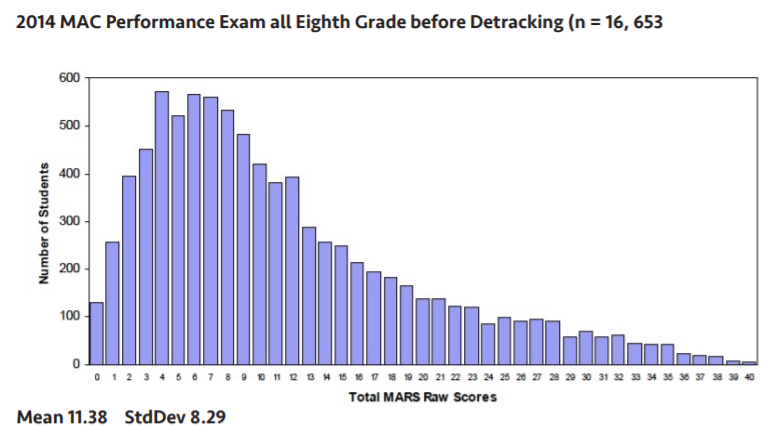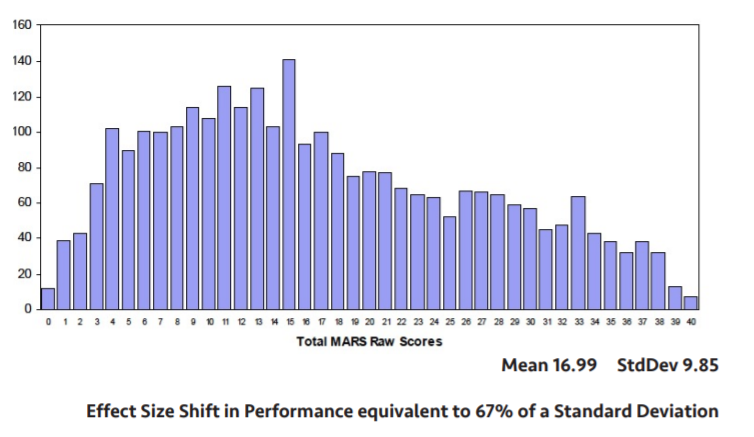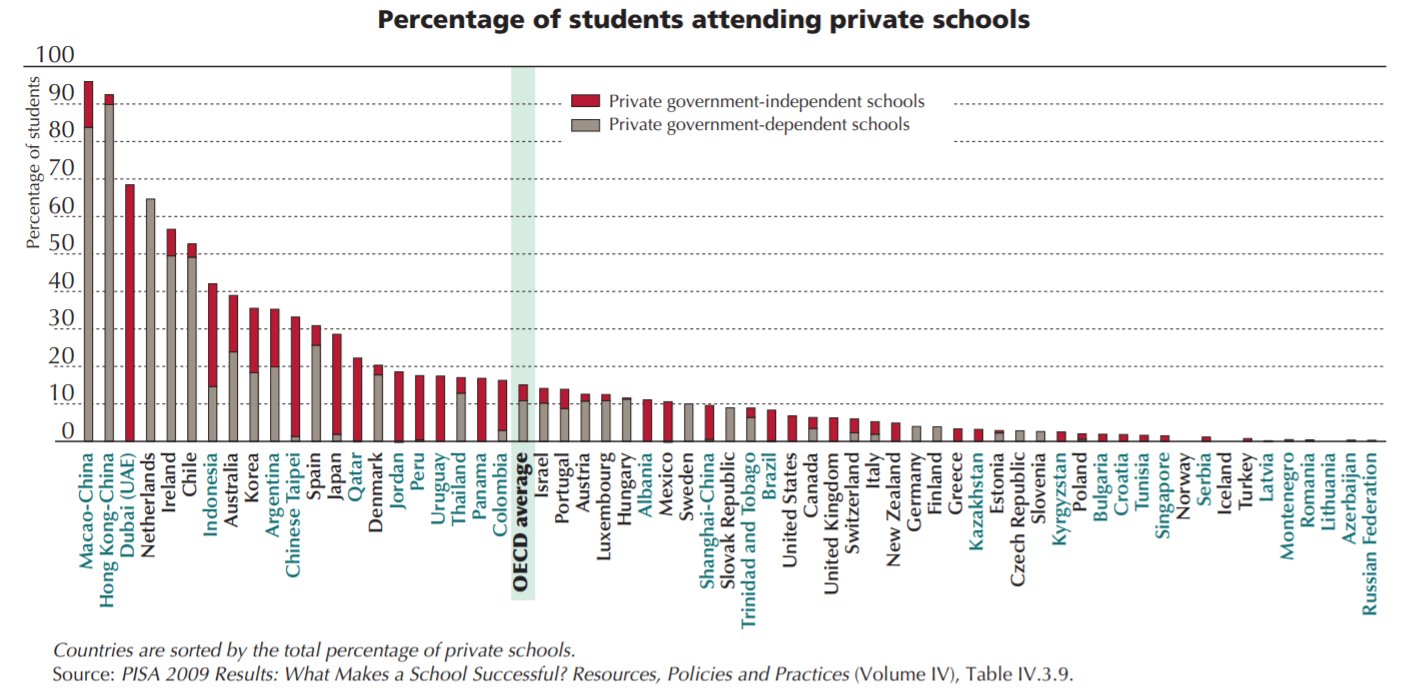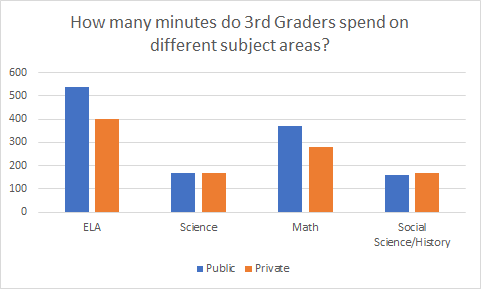Some teachers are architects, others engineers. Myself, I’m more of an amateur plumber, in the sense that I have clumsy solutions to issues I’ve created for myself. I show up and start thwacking away at a problem until it’s fixed and then I continue teaching, until I find something else wrong and go thwack thwack again.
This is very much how progress with whole-group discussions has gone for me. I’ve never had a big “aha!” moment that has fundamentally changed how I’ve gone about running a discussion with a group of kids. Just one problem after another that I’ve slowly amassed answers to.
I think that there is value in whole-group discussions. I think part of the assumed classroom contract is that students will be able to share their thoughts and that teachers will care, and I think that’s good. Students probably need practice sharing their thoughts, and over and above any cognitive impact, the social value of doing this is immense — not just that they can divide fractions, but that they’re the sort of person who can divide fractions.
OK, but there are problems with discussion. They all cluster around questions of inclusion, status, participation. So here is a list of questions, along with how I currently deal with them.
What do you do if a kid had a hand raised and was excited to share, but then put their hand down after someone else answered? And then you call on them, and they say “oh I was going to say what [other kid] said?”
I say, “how were you going to say it?” Or “why do you agree?” Or “how would you have put it?” And if they tell me they were going to say the exact same thing then I say, “no two people put things in the exact same way, with the exact same words.”
Basically I don’t want to create a classroom economy where all we value is being first to say something.
What if a kid says something and it’s complicated and you don’t think others heard them?
I’ll ask them to repeat what they said, but I’ll warn the class that I’m looking for someone who will be able to restate the idea — their first words will have to be “[Student] said,” and the goal is to get as close to what the student actually said as possible. I’ll correct them if they start “umm basically what I think.” No! You’re restating. I learned this from the New Visions Mathematics Curriculum and their instructional routines.
What if there are a ton of hands and you don’t know who to call on?
Then I might ask the entire class to express an answer at the same time. This only works for short questions (obviously), but if it’s a question like “and what would you do next to solve the equation 2x = x – 10” and I’m looking at a ton of hands, I’ll say: “let’s all say what we think at the same time,” and then the class will.
Really? How do you make sure they all speak at the same time? What can you possibly learn from that?
I usually find that a quick countdown and a very visible arm motion gets a group to say things all at once. “OK, let’s all say it together, 1…, 2…,” and then I gesture and they speak.
What’s cool about this is that everyone can participate. If pretty much everyone has the same (correct) answer then I get to congratulate the class, it’s a nice social bonding moment. Hey, we all did it! Nice!
It’s surprisingly easy to tell when there’s dissent in the room when we’re all trying to respond as one. Which gives me a nice follow-up move: “alright, there was definitely some disagreement when we all just called out, let’s talk about that.”
How do you make sure that you call on students in a fair way? In particular, how do you call on boys and girls equally?
I always try to switch genders when I’m calling on students to speak. If I’ve called on a girl, I’ll call on a boy next. And so on.
Some of the most cringe-worthy teaching I’ve witnessed is a teacher saying to a group of girls, “hey, girls are a bit quiet back there, what do you have to say?” Ugh. Gross. Ugggggh.
What if only boys are raising their hands?
What, like half the class is raising their hands and it’s all boys?
Yeah.
In that case I might ask everyone to put their hands down, without any explanation, and I’ll switch to cold-calling.
Cold-calling? Doesn’t that make students feel uncomfortable?
Yes, sometimes, which is why it’s important to do it right.
If I’m worried that students won’t have anything to say when I cold-call them, I stop the class and say: “Hold on everybody, I think this question requires some thinking, and I want to give you a moment to think about it.” And after I write the question on the board or whatever, I’ll assign partners and ask students to share ideas about the question with those partners. While that’s happening, I’ll walk around and see how those discussions are going. Often I’ll hear a kid say something and decide to cold-call on them when we return to the whole-group.
If a student is particularly shy or not confident, I’ll interrupt their conversation and say: “I just was overhearing, what you said was really smart and interesting. I’d like to call on you to explain that to the class. Can I do that?”
But this all represents a significant time investment, and sometimes our whole-group discussions are much shorter than this. In those situations, I’ll find myself cold-calling even though I’m not sure what a student is going to say.
What if you cold-call on a kid and they say something wrong? Isn’t that embarrassing?
Potentially!
I used to handle wrong answers in a bad way that emphasized (inadvertently) the student’s failure. Here’s how it went for me:
Me: What’s 3 + 8? Charlie?
Charlie: 10.
Me: Yes, super interesting. Anyone else have something to say? Yes, Susan?
This violates several principles of whole-group discussions that I have. One of those principles is: If you call on a kid, don’t leave until they’ve said something smart.
Another of those principles is: Don’t set up a kid to get knocked down by some other kid.
It’s never fun to say wrong things in front of other people, but a willingness to do so can accelerate learning. So I’m trying to reduce the social costs of wrongness, what people sometimes call “normalizing” error.
The way I do this (and in line with my two stated principles) is in two ways. First, I correct the child myself. Second, I give them a chance to revise. Here is what that above conversation might look like for me now:
Me: What’s 3 + 8? Charlie?
Charlie: 10.
Me: So [looking at Charlie] it’s actually not 10, it’s 11. But how can you prove that it’s 11?
Or maybe “how could you know it’s not 10” or “why is it 11” or “now given that it’s 11, what is 3 + 9” or whatever it is that you’re trying to teach.
But we’re going to stick with Charlie until he says something that everyone in the room agrees is smart, and then we’re going to give him credit for it, and then we’re going to move on.
What if Charlie never says anything right?
You gotta pick that follow-up question until Charlie has learned something or revised in some way. Hopefully it doesn’t take forever, and a few times a year it does and it can be a bit painful. I try not to give up, but you know, no absolutes in teaching.
Why is this all about managing student responses? Isn’t there more to whole-group work than asking students questions and asking them to answer them?
This is very important: no. I try to make as much of my whole-group time about asking questions and students answering them.
Do I give explanations? Absolutely. But I try to embed explanations in questions. Class begins with a question: “What fraction is this shaded piece of the whole?”
And then, after students respond, I say: “Notice that you can write this as 1/2 divided by 2, and that it equals 1/4. And this is true in general. For example, what is 1/3 divided by 2?”
And I think that’s a big part of how whole-group discussions can be engaging instead of a drag. A lot of boring discussions are light on questions for students and heavy on asides and reflections from the explainer. Questions, questions, questions. Let’s actually enshrine that as another of my Principles: Almost everything in whole-group should either be a question or a response to a question.
So, in summary:
- If you have a ton of volunteers and the question is short, ask everyone to say it at once.
- The goal is everyone participates.
- Give yourself rules to make sure you’re calling on volunteers equitably.
- Use cold-call so you don’t have to rely on volunteers.
- To prepare for cold-call, ask individuals to think and then give time to discuss with partners.
- If you call on a kid, don’t leave until they’ve said something smart.
- Don’t set up a kid to get knocked down by some other kid.
- Almost all time spent in a whole-group should be spent by students responding to a question.
Thwack, thwack, thwack, thwack.











